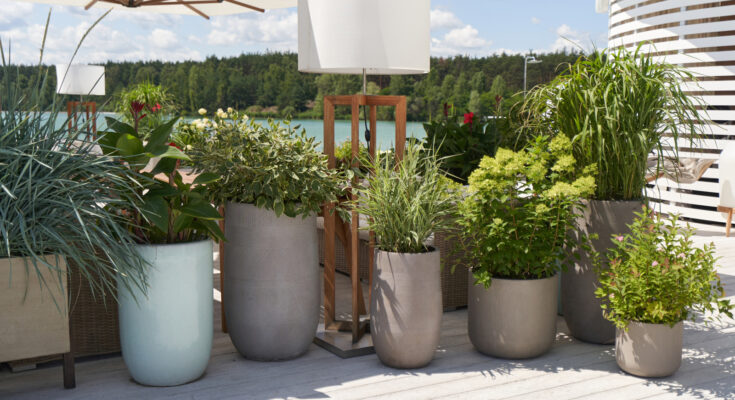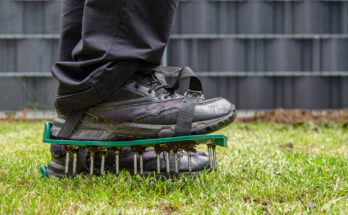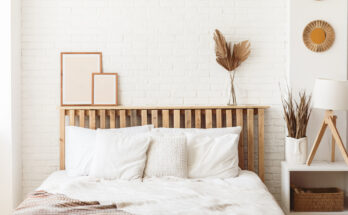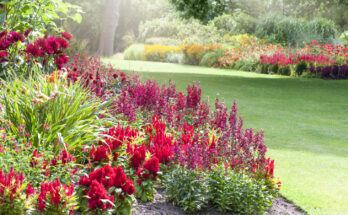Filling large planters with potting soil can get expensive. What choices do you have to fill the lower portion of your planter to cut down on cost yet still promote drainage? You can find dozen of articles and YouTube videos with DIY hacks on adding anything from pine cones to pool noodles to fill that space. There are some items you should never use, however, as they can make drainage worse or even contaminate your soil.
In short, the larger the item, the more counter-productive it is as it might block the drainage hole in the bottom of your planter. You should also avoid things that will degrade quickly, like soft organic material, or that will have an adverse reaction to your soil and hurt your plants. Most importantly: Don’t skimp on the soil and try to take shortcuts; your plants will only be the worse off.
It may sound counterintuitive, but some basic physics can explain how drainage works in soils. Like a sponge, soil absorbs water by capillary action. Porous holes in the soil suck up and retain water. That’s also how the roots of a plant draw moisture up from the soil. Drainage is a battle between gravity and capillary action, but often, capillary action wins -– otherwise, we wouldn’t have giant sequoia trees or even sponges.
Large items will not increase drainage in a large pot
You can prove this yourself with a little experiment. Fill a flower pot nearly full of pebbles, making sure that the pot has drainage holes. Place a large sponge on top of it, then fill the pot with water until it covers the sponge. The water at the bottom of the pot will drain, but the sponge will remain waterlogged for a long time, because that’s what sponges are good at: retaining water.
In short, water does not easily pass from a more porous material (like a sponge) to a less porous material (like pebbles), which is why filling the base of a large pot with non-porous material will not improve the drainage of the soil above it. The base of the pot will drain well, but, in fact, the soil will actually drain less well than if you filled the pot entirely with potting soil, which is of a consistent level of porosity. Large objects actually hinder drainage rather than promote it. You’ve merely reduced the amount of room the plant’s roots have to spread out and draw nutrients from the soil, increasing the chances they will need to revive a root-bound plant.
Using plastics to fill your large pots also runs the risk of adding microplastics to your soil, which can make their way into your plants by capillary action. This can harm the health of your plants, and if you ever grow food in those pots, they can potentially harm your own health as well.
How to improve drainage in large pots
Imagine a large rectangular sponge standing on its side. Drench it with water and watch it dry out. Because the lower part of the sponge is just as porous as the upper part of the sponge, gravity is going to win out over capillary action and drain the sponge faster than if the sponge were sitting on top of a pot full of pebbles. What matters is the depth of the drainage column. That’s why, even though soil in the ground is denser than potting soil, it is very deep, so it has a long drainage column, allowing water to pass through easily.
The key to promoting drainage all throughout the pot is to fill it with things that have a longer drainage column with a similar level of porosity throughout. Rather than filling your pot entirely with potting soil, however, you can add lower-cost compost or garden soil if it has a similar level of porosity as potting soil. By itself, compost and garden soil are less porous than potting mix, which is specifically designed for drainage. Most potting soils are mostly pore space rather than soil — roughly 75 to 80% space. You can add perlite to improve your soil or other drainage materials like crushed bark, coir, rice hulls, coarse sand, pumice, all of which can increase the porosity of the compost or garden soil to more closely match the porosity of the potting soil.
Trust your garden center: When you buy a plant already in a large pot, you’ll never find it half-filled with drainage material. They fill it with properly draining soil. You have lots of choices for promoting drainage in large pots, but save your pool noodles for the pool.



